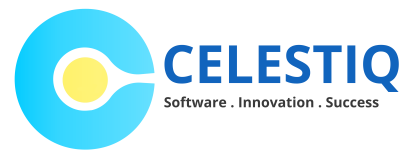Congratulations—you finally decided it’s time to take the plunge and invest in a website for your business. You’ve taken the first step towards establishing your online presence, which is great! Website development process involves the creation of a website from scratch, including its design, functionality, and content. That said, you may also be feeling overwhelmed as to how to progress from here. Building a website isn’t as straightforward as it may seem, and there’s a lot to consider.
Fear not—our team at Celestiq is here to guide you through all the essential steps involved in building a website that suits your company’s needs. In this article, we will break down the website development process from start to finish so you can understand what goes into building an effective and efficient website.
Planning and Preparation: The Foundation of Website Development
Planning and preparation are key to starting off any website development project the right way. It’s important to consider the purpose of your website, analyze target audience needs and goals, create a sitemap and wireframe, and select a platform or content management system.
To help identify your website’s purpose, ask yourself what you hope to achieve with it. Additionally, be sure to define your target audience—what type of visitors will be coming? What is their age group? You can use this information to craft a design that resonates with them. Once this important foundation is laid out, a site map and wireframe can be created that details the pages needed on your website as well as how each page should look.
Finally, selecting the best platform for the job is crucial for executing a successful website development project. Whether you decide on a content management system such as WordPress or Drupal or create something from scratch with custom code base will depend on your specific needs and preferences. Asking yourself important questions such as “How many pages do I need?” “Will there be any interactive features?” “What types of devices will visitors use?” can help guide you in making the right decision for building your website.
Designing a User-Friendly Website
If you’re going to create a great website, it’s important to understand the key elements of UX design. Think of this as the digital landscape of your website—it will shape how users will interact with it and ultimately, determine their experience. To do this effectively, you need an expert in UX design who understands user behavior, technical requirements and business objectives.
At a basic level, UX design should focus on creating an intuitive design that is easy to use and visually appealing. This includes having a clear structure and making sure all elements are easily navigable; plus choosing descriptive page names so users know where they are in the hierarchy. It’s also essential that your website is mobile compatible as mobile web users make up nearly 60% of internet traffic globally.
In short, UX design plays an important role in creating a great web design. It involves more than just making something look good—it requires understanding user behavior and needs so you can provide them with an enjoyable experience every time they visit your site.
Building the Website Structure and Adding Content
A successful website needs a well-thought-out and organized structure that makes sense to its visitors. This is often referred to as the website’s ‘information architecture’. Celestiq is an expert at developing structures that are both organized and effective, creating a navigational experience your site visitors will love.
The structure of a website can be based on four main approaches: hierarchical, sequential, database, or matrix. Hierarchical structures are rooted in a main page with different branches or sections; sequential structures take visitors through predetermined stages; database websites are large collections of data searchable by keywords; and matrix websites use categories instead of text to show their content.
In addition to the structure of the site, content also plays a role in creating an effective website. Celestiq works closely with its clients to develop strategies for creating high-quality content for their websites. This includes copywriting advice and tips for developing engaging materials that attract more visitors and make them want to stay on the page longer–both key ingredients for success.
Optimizing Website for SEO
The fourth step in the website development process is optimizing your website for SEO. SEO stands for Search Engine Optimization, and it’s an important part of making sure that your website can be found by people searching on various search engines.
At Celestiq, we understand the importance of making sure that your website gets found, and we work to make sure that your website is optimized for SEO at every step of the process.
A Few Tips We Keep in Mind When Optimizing a Website:
- Making sure the content on the site follows keyword research and trends
- Structuring titles, meta descriptions and URLs with keywords
- Integrating social media channels with a website to add more content visibility
- Utilizing backlinks from other sites to draw traffic to your website
- Using alt-texts and captions on images to boost page rankings
- Creating an XML sitemap and submitting it to search engines so they can crawl websites
- Giving users a good user experience through usability, performance, and accessibility
By making sure you optimize your site for SEO using all of these techniques, you’re giving your business visibility on search engines like Google — meaning when potential customers type in specific keywords related to what you offer, your business has a better chance of being noticed!
Optimizing Website Speed & Performance
When it comes to optimizing website speed and performance, you’ll want to focus on the technical details. Decreasing website loading time can help improve user experience and engagement, plus it’s a must if your goal is to rank higher in search engine results.
At Celestiq, our team of experts keep the technical details in mind when developing a website from start to finish. We ensure maximum performance with:
Optimizing images
We know that images can play a huge role in impacting load times, so we highly recommend using image compression as well as optimizing image sizes and formats for mobile users.
Minify code & files
This step involves eliminating unnecessary coding, such as comments and white space, which helps reduce the overall size of files without impacting the functionality of the page. This leads to faster loading times!
Browser caching
Enabling browser caching helps minimize HTTP requests because it stores data locally in the visitor’s browser so that it doesn’t need to be downloaded every time they visit your site. This is a great way to keep your website running fast!
The optimization process done by Celestiq will help make sure your website functions properly with boosted performance and speed for better user experience.
Finishing Touches: Quality Assurance, Testing & Deployment
One of the final steps in the website development process is Quality Assurance (QA). This is where the developers go through and test all components of the website to make sure it functions correctly and all bugs have been squashed.
At Celestiq, we have a thorough QA process that includes:
- Cross browser testing to ensure that the website looks and functions correctly in different browsers
- Functionality testing so everything from form submissions to animations are working as expected
- Compatibility testing to ensure that your site renders correctly on different devices including desktop, tablet and mobile phones
- Performance testing to see how fast your website loads and if there are any bottlenecks in the code or server infrastructure
Once we’re happy with the results, we’ll deploy your website on a staging server where you can review and test it yourself. Once approved, we can then push it out to production. And just like that, you will have a new website!
Enhancing the Site With Plugins & Integrations
Once the core of your website is complete and ready to go, it’s time to think about integrating essential plugins and integrations. Not only do these extra features help make your website look more professional and polished, they also help make it easier to manage.
At Celestiq, we understand that integrating the right plugins can be tricky. That’s why we work with you every step of the way to ensure that the plugins and integrations you use are tailored to your needs. Here are a few of our most popular options:
- Customized Analytics Packages – These packages are designed to provide you with detailed insights into the behavior of visitors on your site, such as which pages they view most often or how many times they click on certain links.
- Social Media Integration – We can integrate social media accounts for a more seamless user experience. This will allow users to easily find relevant content from other platforms, as well as like and share posts from your site.
- Payment Gateways – Our payment gateways are secure and reliable, allowing users to shop online without worry. We can also help you set up a system for tracking customer purchases and managing inventory.
- SEO & Content Plugins – We offer a range of SEO tools that can help boost rankings on search engines such as Google or Bing. Additionally, content plugins such as WordPress allow you access all your content in one place so that you can quickly update or edit any page on your site with ease.
By utilizing these integrations, we make sure that your website is completely optimized for maximum performance and user engagement—so that no detail is left unchecked!
Supporting Your Website in the Long Term
The work isn’t done once your website is completed. You should also consider what support you need in order to keep your website up and running, especially if you plan to scale it by adding more features and content.
Maintenance
A website that’s not maintained can quickly become outdated and glitchy, so you want to make sure it’s regularly updated with the latest security patches and features. Working with a company like Celestiq, you can set up long-term maintenance plans that keep your website running smoothly.
Customizations & Upgrades
As your business changes, or as you add new features and content to your website, you may need customizations or upgrades to keep everything in working order. Again, Celestiq can help—and they can ensure a smooth transition process while they’re at it.
Furthermore, Celestiq also makes sure that all sites they create are hosted on reliable servers located all over the world as well as utilize secure backups for added protection for data integrity and availability integrity. This way, no matter what happens, your business’s online presence will stay up and running.
At the end of the day, the goal is always to have a website that works with minimal effort from the user—and with a reliable developer like Celestiq at hand, that goal isn’t too far away.
Conclusion
In the end, it’s important to remember that website development is a collaborative process. It involves the contributions of professionals from many different fields, each with their own strengths and expertise. A successful website development project needs the input and insights of all of them, from the initial requirements gathering through the design, implementation, and testing stages of the project.
At Celestiq, this is our core belief—that we are in this together, from start to finish. Give us the chance to show you what we can do and how we can make the website development process smoother, faster, and more effective. Contact us today to get started on your project.




